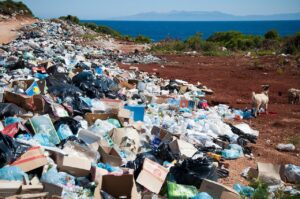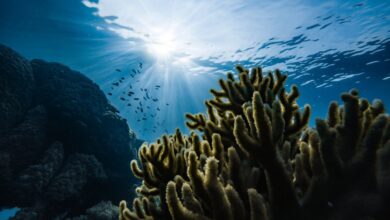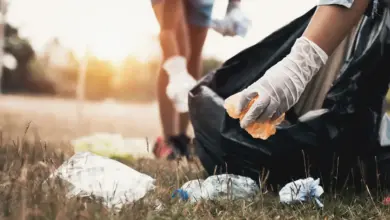The Plastic Pollution Problem
Synthetic plastics are accumulating in the environment to the point that they are causing issues for wildlife and their habitats and for human populations. Bakelite, a genuinely synthetic plastic resin, was invented in 1907 and changed the materials industry forever.
The later decades of the twentieth century revealed plastics to be long-lasting pollutants of a wide range of ecological niches, from the highest peaks to the deepest ocean depths.
Plastics have come under increased scrutiny as a global contaminant for a variety of reasons, including being mistaken for food by animals, blocking drainage systems, and creating substantial visual blight.
Plastic pollution is a serious issue
Plastic is a polymeric substance, meaning its molecules are extremely big and joined in vast chains that seem to go on forever. Although abundant, natural polymers like rubber and silk have not been linked to environmental contamination since they degrade quickly.
Plastics, which are mostly generated from petroleum and may be moulded, cast, spun, or coated as a coating, are now ubiquitous in modern life and have been designed to outlast their organic counterparts.
are now ubiquitous in modern life and have been designed to outlast their organic counterparts.
Most synthetic plastics are not biodegradable, so they stick around for a long time after they enter the environment.
And many of the lightweight single-use plastic goods and packaging materials that make up almost half of all plastics manufactured never make it into containers before being hauled off to landfills, recycling centers, or incinerators.
Instead, they are thrown away incorrectly at or around the place where they are no longer helpful to the customer. They cause instant pollution if they are dropped on the ground, tossed out a window, added to an overflowing garbage can, or blown away by the wind.
Indeed, plastic trash has become a frequent sight in many regions of the world. (The overflow of containment structures and the illegal dumping of plastic also contribute.)
Although major urban centers tend to produce more trash, global studies have not identified any certain nation or demographic as being the most responsible. Pollution from plastic has far-reaching impacts and causes.
Oceanic and terrestrial plastic pollution
The ocean is the ultimate destination for the vast majority of plastic trash produced on land. Every year, people throughout the world throw away millions of pounds of trash, much of it ends up in the seas.
In 2014, scientists released the first oceanographic research to investigate the global distribution of floating plastic waste. It calculated that there were at least 244,000 metric tons (269,000 short tons) of plastic particles floating at or near the surface.
According to research slated for completion in 2021, takeout-related plastics (such as bags, bottles, and utensils) account for 44% of all trash found in waterways and along coastlines.
utensils) account for 44% of all trash found in waterways and along coastlines.
Scientists doing plankton studies in the late 1960s and early 1970s were the first to identify plastic pollution in the ocean, and to this day, much of the attention of those investigating and attempting to abate plastic pollution is focused on the seas and beaches.
The five subtropical gyres, which account for 40 percent of the world’s seas, have been identified as the primary accumulation zones for floating plastic debris.
Contamination caused by plastics fillers
Even when not in the form of trash, plastic nevertheless contributes to environmental degradation because of the chemical compounds it contains.
Indeed, there is newfound worry about the degradation of the environment by chemicals leached from plastics into the air and water.
Therefore, several substances used in plastics have come under strict inspection and regulation, including phthalates, bisphenol A (BPA), and polybrominated diphenyl ether (PBDE).
Phthalates are plasticizers, which are chemicals added to plastic to make it more malleable. As well as in medications, fragrances, and cosmetics, they may be found in medical equipment, food packaging, automotive upholstery, flooring materials, computers, and even fashion.
Bottles, CDs, medical equipment, and the insides of food cans are all common places to find bisphenol A (BPA), a chemical used in the production of transparent, durable polycarbonate plastics and robust epoxy coatings and adhesives.
As a flame retardant, polymers have PBDE added to them. All of these chemicals have been found in people and are known to cause endocrine disruption.
Phthalates are known as anti-androgens because they inhibit the production of male hormones; BPA mimics the natural female hormone estrogen; and PBDE has been proven to affect thyroid hormones in addition to acting as an anti-androgen.
Children and women of childbearing age are particularly at risk when exposed to substances with the potential to alter hormone levels.
Finding a solution
Due to the massive volume of plastic pollution throughout the world, the expense of cleaning up the mess would be too great to be practical.
For this reason, many proposed solutions to plastic pollution aim to reduce the amount of plastic waste produced by limiting or prohibiting the use of particular plastics in the first place.
While it has been difficult to enforce littering fines, several places have begun charging for or outright banning the use of foamed food containers and plastic shopping bags, and many beverage bottles now have deposits that can be redeemed at recycling centers.
Manufacturers of some products bear the cost of establishing a collection and recycling system under so-called extended producer responsibility (EPR) programmes.
Governments and citizens alike are beginning to recognize the seriousness of plastic pollution and are embracing innovative solutions, such as the widespread use of biodegradable plastics and the “zero waste” attitude.
Methods to Reduce Plastic Waste Pollution
It’s easy to feel helpless when confronted with the realities of plastic pollution. The Plastic Free Foundation, however, has proven that millions of people making modest adjustments may have a significant cumulative effect.
The goal of Plastic Free July is to increase recycling rates and encourage people to use less single-use plastic. Small actions, such as reusing cups, water bottles, and plastic bags, and rejecting products that are wrapped in plastic, may add up to huge impacts over time.
On a bigger scale, we can persuade businesses and governments to take action and convince our local communities to adopt permanent solutions.
Reuse and Recycle
Please reuse and recycle to lessen the impact of single-use plastic, it is important to investigate alternative reuse models like cup libraries and container refill and reuse programs.
If you follow your community’s recycling guidance and toss things in the correct bin, you can help recycling succeed. Urge policymakers to mandate the use of recycled plastic in manufacturing and packaging.
Eliminate
More stringent limits on plastic bags and other single-use items are needed to do rid of wasteful or superfluous plastic containers.
A lot of progress has been made in recent years toward outlawing single-use plastic bags in many nations, but there’s still room for improvement.
Lightweight plastic bag bans, foam packaging bans, and balloon release bans all encourage consumers and companies to discover plastic-free alternatives.
Conclusion
One garbage truck’s worth of plastic is poured into the ocean every minute. So make sure to recycle your junk or put it in the bin.
Plastic waste in the environment affects everyone. Of the 9.2 billion tonnes of plastic manufactured between 1950 and 2017, about 7 billion tonnes were converted into plastic garbage and buried or sent to landfills.
The ability of ecosystems to adapt to climate change can be negatively impacted by plastic pollution, which in turn threatens the livelihoods, food production capacities, and social well-being of millions of people.
Climate change, ecosystem degradation, and resource consumption are only a few examples of environmental stressors that should be considered when evaluating the environmental, social, economic, and health concerns of plastics.





